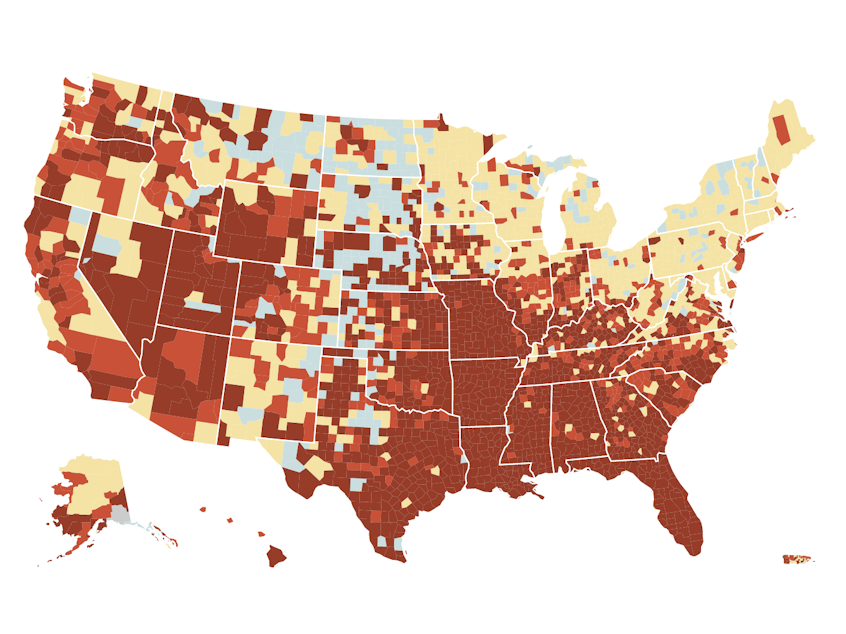Do You Need To Wear A Mask Indoors Where You Live? Check This Map

With the delta variant taking off around the U.S., the federal government Tuesday updated its masking guidelines for fully vaccinated people.
The new advice is to mask up indoors if you live in a place with "substantial" or "high" coronavirus transmission. (The guidance for people who are unvaccinated remains the same: Always mask up indoors.)
So, what's the level of transmission where you live? Look up your county on this interactive map.
The change to the Centers for Disease Control and Prevention's masking guidelines came after pressure from many outside experts. The CDC's director, Dr. Rochelle Walensky, said in a news briefing that the change comes after new evidence showed delta was more transmissible than previously understood.
"This was not a decision that was taken lightly," Walensky said. She noted that new data from outbreak investigations show that, rarely, vaccinated people can still get infected and spread the virus to others.
"On rare occasions, some vaccinated people infected with the delta variant after vaccination may be contagious and spread the virus to others," she told reporters when announcing the new guidelines. "This new science is worrisome and, unfortunately, warrants an update to our recommendations."
The data for this map comes from the CDC and is updated regularly. The color-coding is based on two metrics: the number of new cases per 100,000 residents and the percentage of coronavirus tests that come back positive in a seven-day period. (A high positivity rate indicates that the number of infections in a place may be high and that more testing needs to be done.)
If those two metrics show different levels of transmission in a given place, the CDC selects the higher level. Nearly two-thirds of counties in the country are experiencing substantial or high transmission as of late July.
The CDC classifies a community as having "substantial transmission" if there are 50 to 99 weekly cases per 100,000 residents or if the positivity rate is between 8.0 and 9.9% in the last seven days.
If your county falls into this category, you should wear a mask indoors, whether or not you are vaccinated. The CDC also advises on its website that "everyday activities should be limited to reduce spread and protect the health care system."
A county has "high transmission" if it has 100 or more weekly cases per 100,000 residents or a 10% or greater test positivity rate in the last seven days. In that case, communities should implement universal masking indoors and consider additional "significant measures ... to limit contact between persons," according to CDC's website.
Health experts say that the level of community transmission is not the only factor to guide whether you choose to wear a mask in public. There are other circumstances in which vaccinated people might want to mask up — for instance, if you live with unvaccinated children or have immunocompromised family members, or if you're going somewhere without good ventilation.
Walensky continues to emphasize the need for more people to get vaccinated, noting that the areas with the lowest vaccination rates are getting hit hardest with this recent wave. "With the delta variant," she said, "vaccinating more Americans now is more urgent than ever." [Copyright 2021 NPR]

